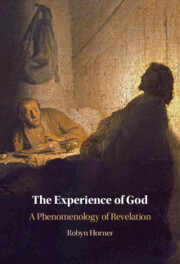Book contents
- The Experience of God
- The Experience of God
- Copyright page
- Contents
- Acknowledgements
- Part I The Problem in Context
- Part II Revelation in Contemporary Philosophy and Theology
- Chapter 3 Revelation as a Philosophical Problem
- Chapter 4 Revelation as a Theological Problem I
- Chapter 5 Revelation as a Theological Problem II
- Part III The Event of Revelation
- Part IV The Event in Person
- Bibliography
- Index
Chapter 4 - Revelation as a Theological Problem I
Theology and Metaphysics
from Part II - Revelation in Contemporary Philosophy and Theology
Published online by Cambridge University Press: 13 October 2022
- The Experience of God
- The Experience of God
- Copyright page
- Contents
- Acknowledgements
- Part I The Problem in Context
- Part II Revelation in Contemporary Philosophy and Theology
- Chapter 3 Revelation as a Philosophical Problem
- Chapter 4 Revelation as a Theological Problem I
- Chapter 5 Revelation as a Theological Problem II
- Part III The Event of Revelation
- Part IV The Event in Person
- Bibliography
- Index
Summary
In Chapter 4, I consider some responses to the charge that theology bases itself on a metaphysics that is onto-theological. While I do not question any potential differences between a revealed theology and a natural theology, to the extent that theology is articulated in conceptual categories, it is included in this charge. One response to this view, represented by John Milbank, strongly reaffirms a scholastic metaphysics and embraces the belief that by means of revelation, Christians can judge the world from a higher vantage point than others. In fact, according to his approach, Christians have such a high vantage point that they can have a ‘God’s-eye view’ or what is sometimes called a ‘view from nowhere’. To demonstrate a second type of response by theologians to the charge that theology can simply be dismissed as onto-theological, I examine the complex case of Marion's engagement with a number of Thomistic thinkers. While Marion does not prosecute his case with resounding success, his questions at least disturb some of the assumptions of a scholastic approach that is seen to be fundamental to Catholic theology.
- Type
- Chapter
- Information
- The Experience of GodA Phenomenology of Revelation, pp. 61 - 75Publisher: Cambridge University PressPrint publication year: 2022

